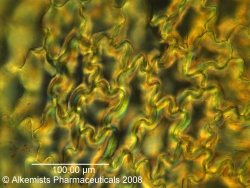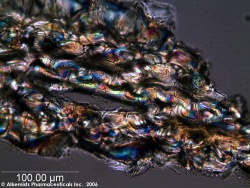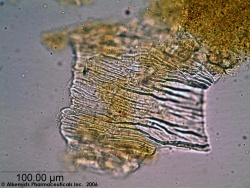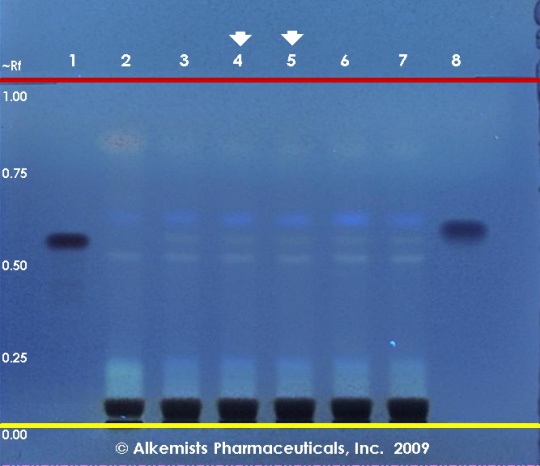Lycium barbarum (fruit)
m |
|||
| Line 20: | Line 20: | ||
=Microscopic Characteristics= | =Microscopic Characteristics= | ||
| − | {| | + | {{Media3 |cat=Microscopy |companyimage= AP-LOGO-Laboratories Crop - Copy.jpg |
| − | + | | companyURL= http://www.alkemist.com | |
| − | | companyURL= http://www.alkemist.com | + | |companyimage2= AP-LOGO-Laboratories Crop - Copy.jpg |
| − | | | + | | companyURL2= http://www.alkemist.com |
| − | | | + | |companyimage3= AP-LOGO-Laboratories Crop - Copy.jpg |
| − | + | | companyURL3= http://www.alkemist.com | |
| − | + | |mainimage= Lycium_barbarum_-_Alkemist_Laboratories.jpg | |
|caption1= Lignified cells of the testa observed at 400x with Acidified Chloral Hydrate Glycerol Solution. | |caption1= Lignified cells of the testa observed at 400x with Acidified Chloral Hydrate Glycerol Solution. | ||
| − | |source= Elan M. Sudberg, Alkemist Laboratories | + | |source= Elan M. Sudberg, Alkemist Laboratories |
| − | | | + | |image2= Lycium_barbarum-1-_Alkemist_Laboratories.jpg |
| − | | | + | |caption2= Thick walled wavy stone cells observed at 400x with Acidified Chloral Hydrate Glycerol Solution. |
| − | | | + | |source2= Elan M. Sudberg, Alkemist Laboratories |
| − | | | + | |image3= Lycium_barbarum-2-_Alkemist_Laboratories.jpg |
| − | | | + | |caption3= Parallel striations of the exocarp observed at 400x with Acidified Chloral Hydrate Glycerol Solution. |
| − | | | + | |source3= Elan M. Sudberg, Alkemist Laboratories }} |
| − | + | ||
=High Performance Thin Layer Chromatographic Identification= | =High Performance Thin Layer Chromatographic Identification= | ||
Revision as of 20:06, 18 March 2014
Contents |
Nomenclature
Lycium barbarum L. Solanaceae
Standardized common name (English): lycium
Pinyin name(s): ningxia gou qi; di gu pi (root bark); gou qi zi (fruit)
Botanical Voucher Specimen
Organoleptic Characteristics
Macroscopic Characteristics
Microscopic Characteristics
 |
 |
 |
|
|
|
|
High Performance Thin Layer Chromatographic Identification
|
Goji (fruit) (Lycium barbarum) Lane Assignments Lanes, from left to right (Track, Volume, Sample):
Reference materials used here have been authenticated by macroscopic, microscopic &/or TLC studies according to the reference source cited below held at Alkemists Laboratories, Costa Mesa, CA. Stationary Phase Silica gel 60, F254, 10 x 10 cm HPTLC plates Mobile Phase ethyl acetate: CHCl3: HCOOH [6/4/2] Sample Preparation Method 0.3 g + 3 ml 80% CH3OH sonicated + heated @ 50° C ~ 1 hr Detection Method Vanillin/H2SO4 Reagent -> 110° C 5 min -> UV 365 nm Reference see Pharmacopoeia of The Peoples Republic of China, Volume 1, 2005
|
Supplementary Information
Sources
- ↑ Elan M. Sudberg, Alkemist Laboratories http://www.alkemist.com
- ↑ Elan M. Sudberg, Alkemist Laboratories http://www.alkemist.com
- ↑ Elan M. Sudberg, Alkemist Laboratories http://www.alkemist.com
- ↑ Elan M. Sudberg, Alkemist Laboratories http://www.alkemist.com




